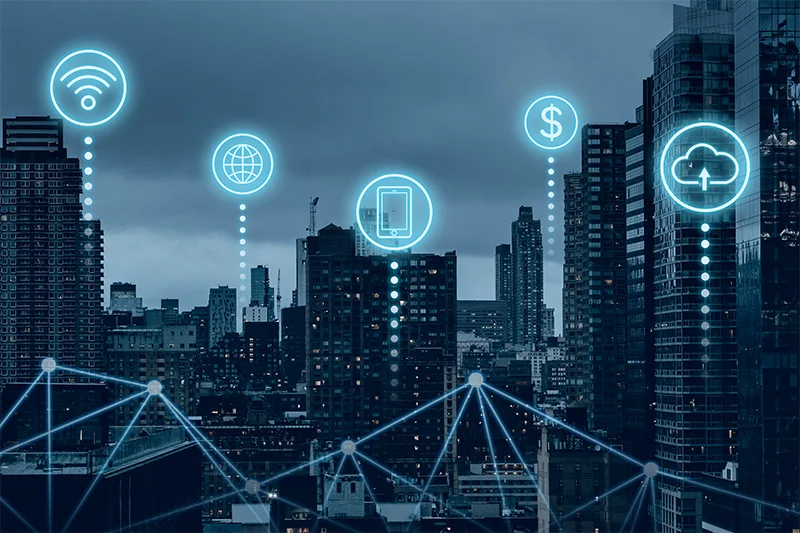“The Evolution of Smart Cities: Integrating Technology for Sustainable Urban Living”
With the rapid advancements in technology, cities around the world are transforming into smart cities, embracing innovative solutions for sustainable urban living. Smart cities integrate technology and data to improve efficiency, enhance quality of life, and reduce the environmental impact of urban areas. This evolution has the potential to revolutionize the way we live, work, and interact within our communities. By harnessing the power of technology, smart cities offer a promising future for urban development.
Smart Cities: Connecting Technology and Urban Living ===
Smart cities are built on the foundation of connectivity, utilizing the Internet of Things (IoT) to interconnect devices and systems. Through this network of sensors, cameras, and devices, cities can collect and analyze data to make informed decisions in real-time. This connectivity enables various aspects of urban life to be smarter and more efficient, including transportation, energy management, waste management, and public safety. By seamlessly integrating technology into the fabric of the city, smart cities pave the way for a more connected and sustainable future.
The Benefits of Smart Cities: A Sustainable Future ===
The adoption of smart city solutions brings numerous benefits to both the environment and its inhabitants. By optimizing the use of resources, smart cities can significantly reduce energy consumption, minimize waste generation, and lower carbon emissions. Intelligent energy grids ensure efficient distribution and consumption of electricity, while smart waste management systems enable proactive collection and recycling. Moreover, smart cities promote sustainable transportation options, such as electric vehicles and shared mobility services, reducing traffic congestion and air pollution. Overall, smart cities offer a path towards a more sustainable and eco-friendly future.
The Evolution of Urban Infrastructure: From Traditional to Smart ===
The transformation of traditional urban infrastructure into smart infrastructure is a fundamental aspect of smart city development. This evolution involves integrating technology into existing infrastructure to enhance its functionality and efficiency. For example, smart street lighting systems use sensors to detect movement and adjust lighting levels accordingly, optimizing energy consumption. Additionally, the installation of smart meters enables real-time monitoring and management of water and energy usage, promoting conservation. By upgrading and modernizing infrastructure, smart cities create a solid foundation for sustainable urban living.
Harnessing Technology for Energy Efficiency in Smart Cities ===
Energy efficiency is a crucial aspect of sustainable urban living, and smart cities leverage technology to maximize energy savings. Smart buildings are equipped with sensors and automation systems that regulate temperature, lighting, and ventilation based on occupancy and external conditions. Furthermore, smart grids enable real-time monitoring and management of energy consumption, allowing for demand response and efficient distribution of electricity. By integrating renewable energy sources, such as solar panels and wind turbines, smart cities can further reduce reliance on fossil fuels and promote clean energy solutions.
Smart Mobility: Enhancing Transport Systems in Smart Cities ===
Transportation plays a vital role in urban life, and smart cities prioritize efficient and sustainable mobility solutions. Intelligent transportation systems use real-time data to provide traffic updates, optimize routes, and manage congestion. Smart parking systems help drivers locate available parking spaces, reducing unnecessary fuel consumption and emissions. Additionally, the integration of electric vehicles and charging infrastructure promotes cleaner transportation options. By facilitating seamless and sustainable mobility, smart cities improve the quality of life for their residents while reducing the negative impact on the environment.
Improving Citizen Well-being through Smart City Innovations ===
Smart city innovations aim to enhance the well-being of citizens by leveraging technology for improved public services and amenities. For instance, smart healthcare systems enable remote patient monitoring, personalized health tracking, and efficient healthcare delivery. Smart public safety solutions, including video surveillance and emergency response systems, enhance security and emergency preparedness. Moreover, smart city initiatives focus on creating inclusive and accessible environments for all individuals, ensuring that technology is utilized to address social and economic disparities. Through these innovations, smart cities prioritize the well-being and quality of life of their residents.
Smart Governance: Empowering Communities for Sustainable Urban Development ===
Smart governance is a critical aspect of smart cities, empowering communities to actively participate in urban development initiatives. Through digital platforms and citizen engagement tools, residents can provide feedback, report issues, and contribute to decision-making processes. This participatory approach fosters a sense of ownership and collaboration, creating a more inclusive and democratic environment. Additionally, open data initiatives promote transparency and accountability in governance, allowing citizens and organizations to access and analyze information for informed decision-making. By empowering communities, smart cities ensure that sustainable urban development aligns with the needs and aspirations of its residents.
Data-driven Solutions: The Key to a Smarter Future ===
Data is the backbone of smart cities, driving efficiency, innovation, and decision-making processes. By collecting and analyzing vast amounts of data, cities can identify patterns, trends, and areas for improvement. This data-driven approach allows for predictive analytics, enabling proactive measures to address various challenges, such as traffic congestion, energy demand, and waste management. Furthermore, data sharing between different sectors and stakeholders fosters collaboration and innovation, leading to the development of more effective and sustainable solutions. In this era of rapid technological advancements, data is the key to unlocking the full potential of smart cities and creating a smarter and more interconnected future.
Embracing Technology for a More Sustainable World ===
The evolution of smart cities represents a paradigm shift in urban living, where technology and sustainability converge to create a more efficient, inclusive, and environmentally friendly future. By integrating technology into various aspects of urban life, smart cities enhance the well-being of their residents while minimizing the ecological footprint. The benefits of smart cities are far-reaching, from reduced energy consumption and improved transportation systems to enhanced public services and citizen empowerment. As we embrace technology and harness its potential, we pave the way for a more sustainable and interconnected world, where cities serve as vibrant and livable hubs for generations to come.

